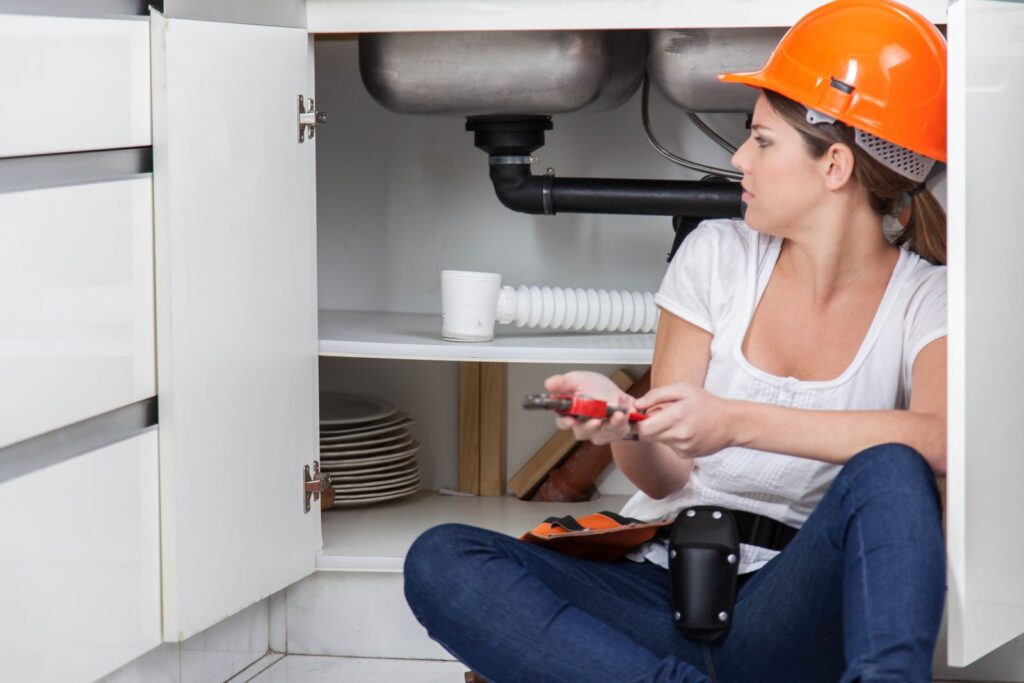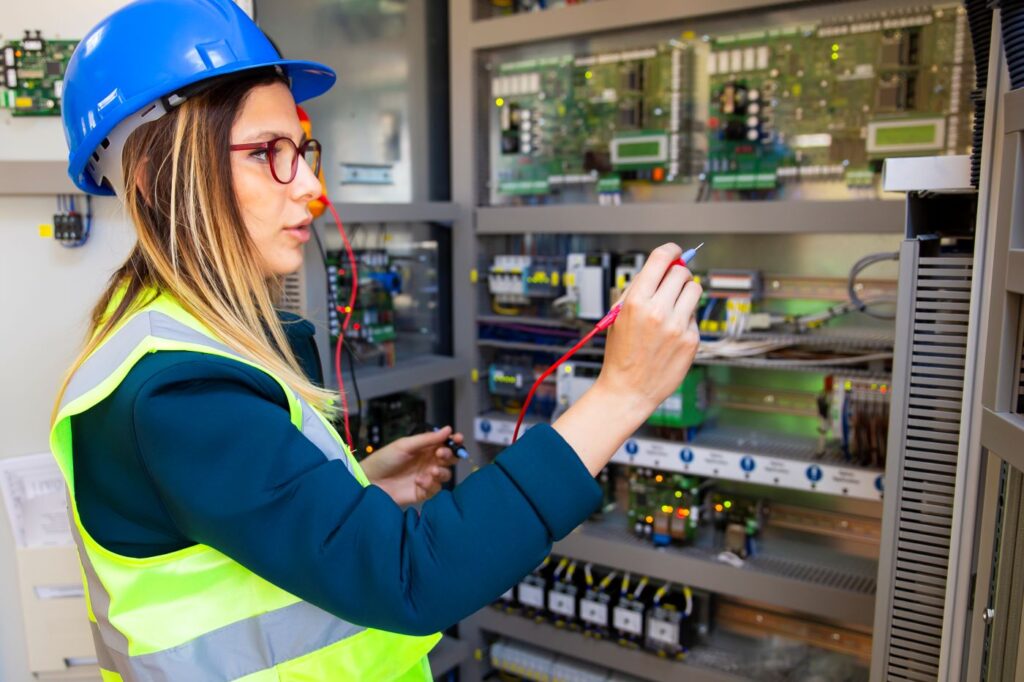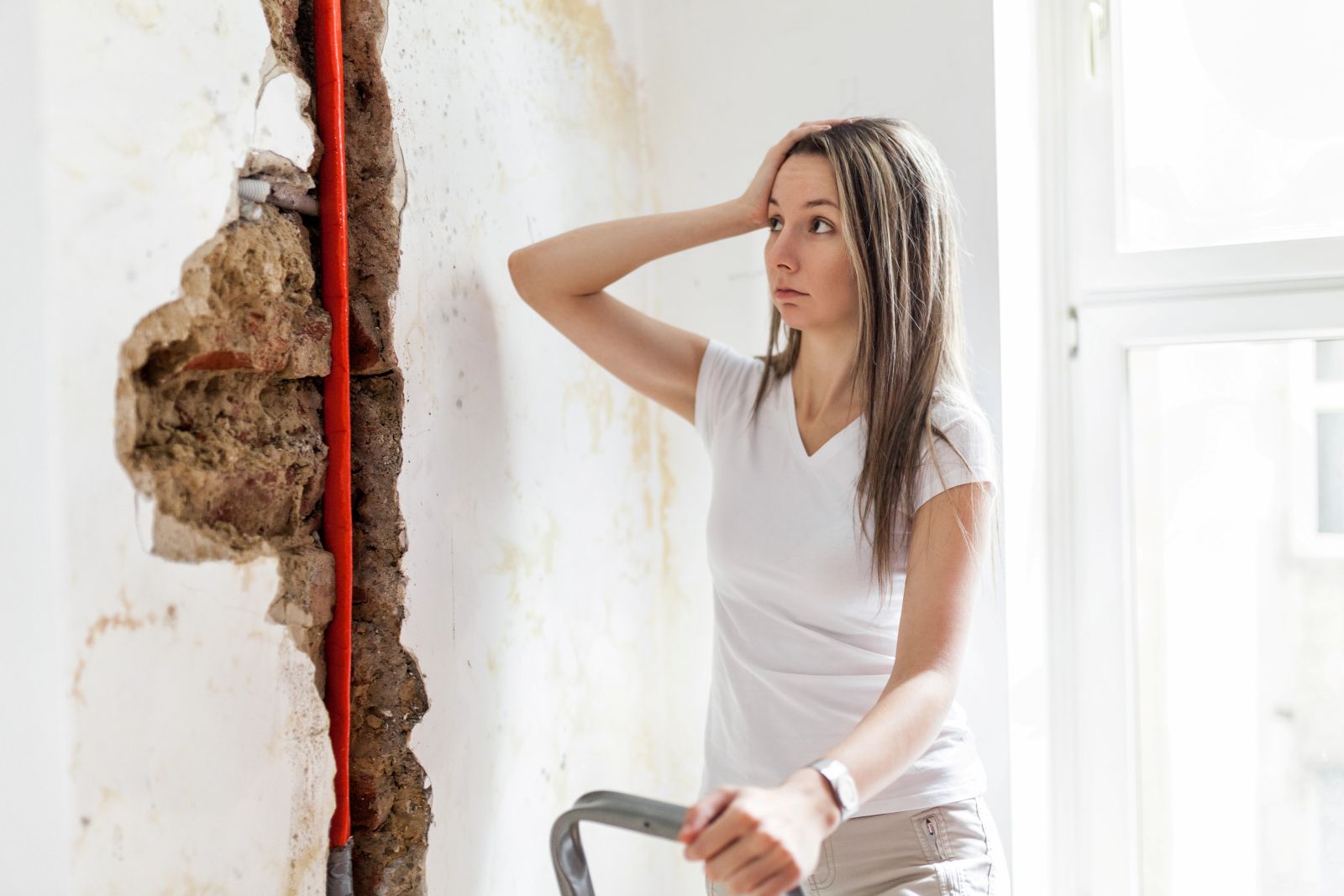There is a noticeable surge in the number of women entering male-dominated professions such as builders, mechanics, electricians, and plumbers, is challenging the status quo and fostering a more diverse workforce in Australia.
This transformative trend not only symbolises a departure from age-old gender norms but also underscores the vital role that diversity plays in the Kiwi trade sector. There is a growing wave of women carving their paths in these vocations, exploring the changing dynamics, and the profound impact this cultural evolution has on the face of Australia’s workforce.
The hammers, wrenches, and power tools once exclusively wielded by men are now finding new hands, breaking ground for a future where talent knows no gender boundaries.
Historical Context
Formidable challenges and deeply ingrained stereotypes have marked the historical narrative of women entering trades in Australia. In the not-so-distant past, societal expectations firmly tethered women to traditional roles, assigning them to domestic roles rather than involving them in the world of trades.
Stereotypes portraying physical labour as exclusively male and perpetuating the myth that certain professions were beyond a woman’s capability hindered the ambitions of many aspiring tradeswomen.
However, a series of significant milestones has paved the way for a more inclusive environment. The Equal Opportunity and Diversity Laws of Australia challenge discriminatory practices and advocate for equal opportunities. This legislative stride laid the foundation for dismantling gender barriers across various sectors, including trades.
Throughout the 1990s and early 2000s, a surge in awareness campaigns and educational initiatives aimed at debunking gender stereotypes gained momentum. These efforts, coupled with a changing societal mindset, contributed to a gradual but noticeable shift in perceptions surrounding women in trades.
As Australia embraced a more progressive outlook, traditional gender norms began to disappear, fostering an environment where women could envision themselves not only as capable but also as essential contributors to the trades industry.

The Current Scene
In the current Australian the trades landscape, the emergence of women is steadily increasing. While statistics indicate that women still represent a minority in these fields, there is a notable increase in their presence. According to recent information from South West TAFT one in five tradies are now women, which comprise around 3% of the trades workforce. This upward trajectory signals a promising trend toward a more balanced and diverse industry.
Numerous initiatives and programs have been instrumental in encouraging and supporting women to pursue careers in trades. One such initiative is the “Trades Women Australia” campaign, spearheaded by industry associations and vocational training institutions.
This campaign aims to break down stereotypes, dispel myths, and showcase the achievements of women thriving in traditionally male-dominated roles. Additionally, targeted scholarships and financial aid programs have been introduced to alleviate barriers to entry for aspiring female tradespeople.
Vocational training institutions across Australia have also revamped their outreach efforts to engage and recruit women actively. Specialised workshops, mentorship programs, and open-house events are organised to provide a firsthand look into the trades, fostering a supportive environment for women to explore and pursue these careers.
The Australian government, recognising the importance of gender diversity in the workforce, has implemented policies that incentivise businesses to promote inclusivity. Companies embracing gender-balanced hiring practices are eligible for certain benefits, encouraging a shift toward greater representation of women in trades.
Training and Education
In response to the growing interest among women in pursuing a career in the trades industry, Australia has seen a commendable expansion in the availability of training and education programs tailored to meet their needs.
Vocational training institutions, polytechnics, and industry-specific organisations are playing a pivotal role in creating pathways for women to excel in traditionally male-dominated trades.
Vocational Training Institutions
Leading polytechnics and vocational training institutions across Australia have adapted their programs to be more inclusive. Courses in building, mechanics, electrical work, and plumbing are now designed to accommodate diverse learning styles and backgrounds.
These institutions offer practical, hands-on training that equips women with the skills necessary to thrive in the trades. Additionally, flexibility in scheduling and course structures is often provided to accommodate a range of individual circumstances.
Women in Trades Organisations
Organisations such as “Trades Women Australia” actively promote and support women pursuing careers in traditionally male-dominated fields. These groups offer mentorship programs, networking opportunities, and resources to connect women with experienced professionals in their chosen trades.
The encouragement and guidance provided by these organisations contribute significantly to the success and retention of women in the industry.
Industry-Specific Initiatives
Several industry-specific initiatives focus on creating a welcoming environment for women in trades. Trade associations and unions collaborate with educational institutions to develop apprenticeship programs that encourage more women to enter the workforce.
These initiatives often include outreach efforts in schools to introduce girls to the possibilities within the trades from an early age.
Government Support
Government initiatives also play a vital role in supporting women’s education and training in trades. Funding and scholarships are often made available to encourage women to pursue careers in these fields, making education more accessible and affordable.
One notable example is the “Jobs and Skills Council“, which partners with employers to identify skill gaps and supports training initiatives, including those aimed at increasing diversity in the trades. This holistic approach ensures that women not only have access to education but are also connected to employment opportunities.
Support Networks
Within trades in Australia, the significance of mentorship and support networks for women cannot be overstated. Navigating through traditionally male-dominated industries often comes with unique challenges, and having a support system in place can make a substantial difference in a woman’s career trajectory.
Importance of Mentorship
Mentorship plays a pivotal role in providing guidance, encouragement, and a sense of belonging to women entering trades. Seasoned professionals serve as mentors, sharing their experiences, offering advice, and helping navigate the intricacies of the workplace.
This fosters a supportive environment where women feel empowered to overcome obstacles and pursue leadership roles.
Organisations and Groups Providing Support
Several organisations and groups in Australia actively work towards creating robust support networks for women in trades. “Trades Women Australia” is the best example. They offer mentorship programs, networking events, and resources to connect women with mentors in their respective fields.
The “National Association of Women in Construction (NAWIC)” is another organisation that focuses on supporting and advancing women in the construction industry through networking and educational initiatives.
Trade unions, industry associations, and vocational training institutions often collaborate to establish support networks. These platforms not only provide mentorship opportunities but also create spaces for women to share experiences, discuss challenges, and celebrate achievements.
By emphasising the importance of mentorship and support networks, Australia is fostering an environment where women in trades can not only excel in their careers but also inspire future generations to break through gender barriers in the workforce.
Challenges Faced
As women increasingly carve their paths in Australia’s trades, they encounter persistent challenges rooted in stereotypes, gender bias, and workplace culture. Stereotypes portraying physical labour as a male domain and perpetuating gender norms remain formidable barriers for women entering trades.
Gender bias, whether subtle or overt, can manifest in hiring practices, promotional opportunities, and overall workplace dynamics. The existing workplace culture, shaped by long-standing traditions, may not always align with the diverse needs and experiences of women in trades.
To address and mitigate these challenges, comprehensive efforts are underway. Awareness campaigns aim to dismantle stereotypes and cultivate a mindset that embraces diversity in trades. Educational institutions and industry organisations are implementing initiatives that challenge biases and foster inclusive learning environments.
Industry Changes
The Australian trades industry is experiencing transformative changes aimed at fostering inclusivity for women tradies. Businesses are actively reevaluating and reforming their practices, recognising the inherent value of diverse perspectives and skills.
Gender-inclusive hiring policies and mentorship programs are becoming more prevalent, offering women opportunities for professional growth. Industry leaders are championing a cultural shift, challenging outdated norms and fostering workplaces that celebrate diversity.
And many different companies employ women tradies throughout Australia in trades such as plumbing, electrical and mechanics.
Government initiatives further incentivise companies to create gender-balanced environments, driving positive changes in hiring, retention, and promotion practices. These industry-wide transformations not only break down traditional gender barriers but also create an environment where women in trades can thrive and contribute their skills to the fullest extent.

Future Outlook
The future for women in trades in Australia holds promising prospects, with a trajectory marked by continued growth and advancement. As the industry becomes increasingly aware of the benefits of diversity. There is a growing commitment to creating a more inclusive environment for women pursuing careers in traditionally male-dominated trades.
Shifting Perceptions
The evolving societal mindset and ongoing efforts to challenge stereotypes are expected to contribute to a more welcoming atmosphere for women in trades. As perceptions continue to shift, more young women may be inspired to explore and pursue these rewarding career paths.
Increased Advocacy and Support
The advocacy for women tradies in trades is gaining momentum. With a surge in support from industry leaders, educational institutions, and government bodies. This support translates into more resources, mentorship programs, and opportunities. Designed to empower women and address the unique challenges they may face.
Educational Initiatives
Educational institutions are likely to continue adapting their programs to be more inclusive. Offering tailored courses and support structures that cater to diverse learning styles and backgrounds. This proactive approach will encourage more women to enrol in trades-related education and training programs.
Technology and Innovation
The integration of technology in trades is creating new opportunities for women. As the industry evolves, proficiency in digital tools and innovative technologies becomes increasingly valuable. Offering women a chance to excel in roles that demand a blend of technical and creative skills.
Networking and Mentorship Opportunities
The emphasis on mentorship and networking is expected to grow, providing women with crucial guidance and support throughout their careers. Collaborative efforts between industry organisations, trade unions, and educational institutions will likely result in more robust networks. Facilitating the exchange of knowledge and experiences.
Policy Changes
Continued advocacy for gender equality may lead to the implementation of policies that promote diversity and inclusion. Companies aligning with these policies may find themselves at the forefront of positive change. In turn, creating environments that attract and retain a diverse workforce.
Rounded up
As we look into the future, the trajectory for women in trades in Australia holds immense promise. Shifting perceptions, increased advocacy, educational initiatives, technological integration, and policy changes. Are set to propel women further into the heart of the trades industry.
Check out the following article on the Job description of an Electrician.
The emphasis on networking and mentorship ensures that every woman in trades has a guiding hand. Steering her towards unprecedented success. The future is not just female. It’s a harmonious collaboration of skilled individuals, regardless of gender, shaping a trades industry that truly knows no boundaries.


